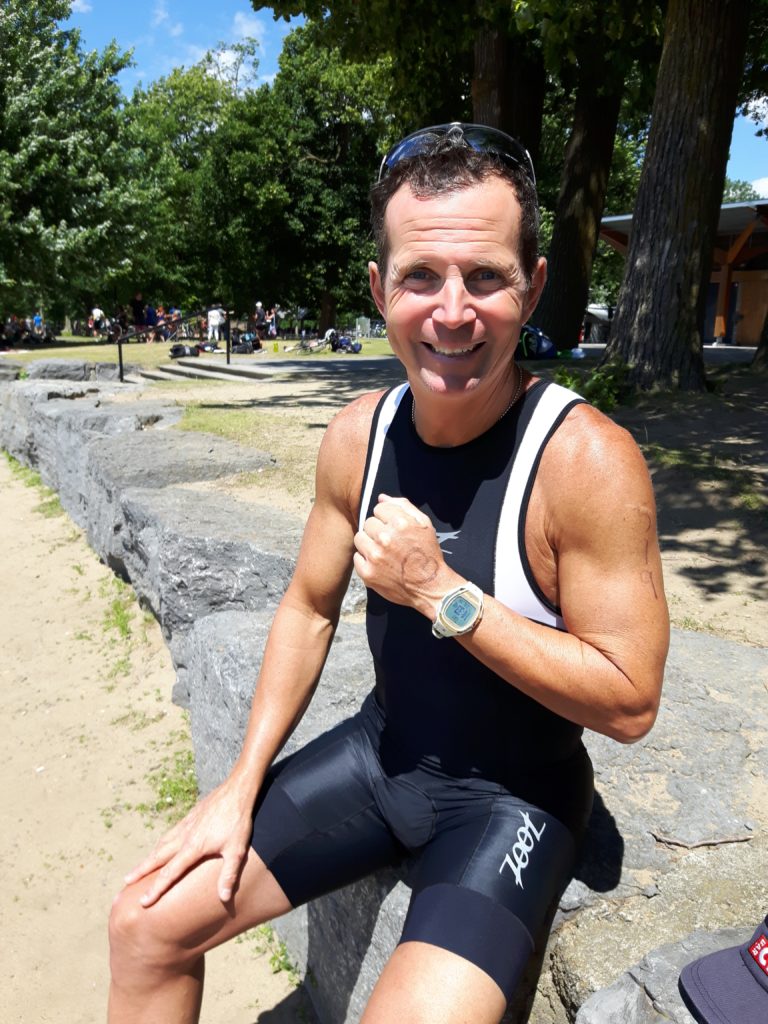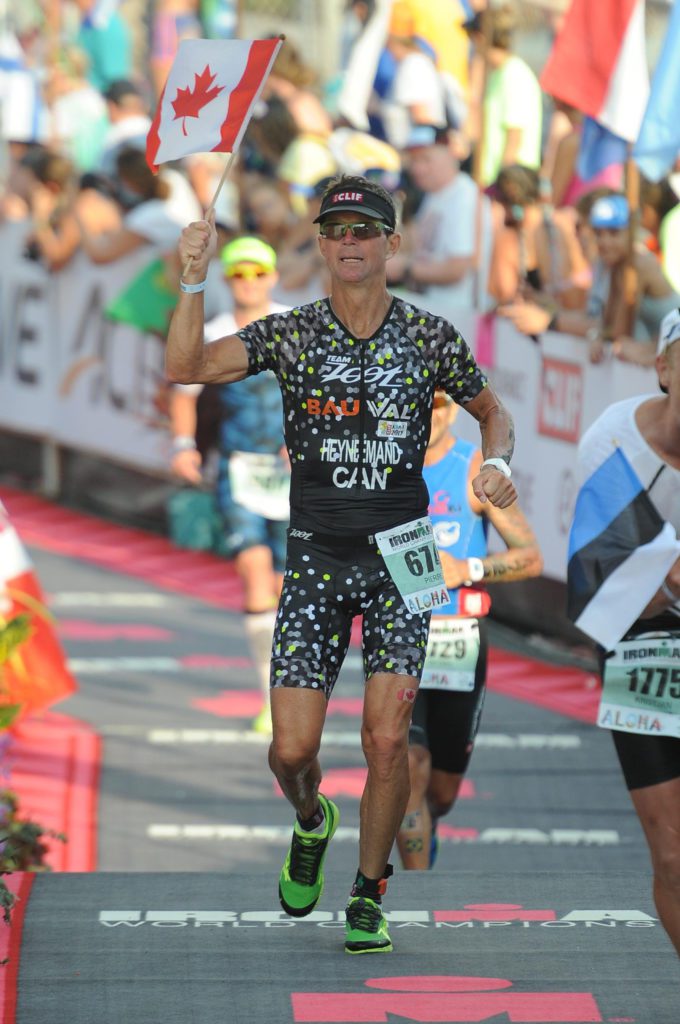Pierre Heynemand Jr: The stars are aligned for Kona contender
Age group Kona Contender, Heynemand Jr. will be making his 50th Ironman start this weekend


For 30 years now, before every race, Pierre Heynemand Jr. scrawls a heart on the back of his hand in indelible felt marker.
“To show respect for my family,” Heynemand says. “Every time I do a triathlon, I just have to glance at my hand, and I think about them.”
Heynemand’s wife, Christine Bruneau, is his greatest supporter, having realized from the start that life with Pierre would mean early mornings and holidays revolving around races. Their children, Félix and Laurianne, are active, too. Laurianne, 17, is a competitive triathlete on the junior elite circuit.
But when Heynemand, who turns 52 in December, talks about “my family,” he also means the kids with whom he trains at the Jet Club in Joliette, Que., northeast of Montreal; and the staff and students at the high school where he is principal; and everyone he embraces in his wide circle of influence as a mentor and an athlete.
He will be channelling all of them, looking at that heart, as he stands on the beach at Kailua-Kona Bay on October 13, the 40th anniversary of the Ironman World Championship. It will be Heynemand’s eighth time at Kona – and his 50th Ironman.
“All the stars are aligned,” says Heynemand. “For several years now, I’ve circled around that top spot on the podium: fifth, second, and second again last year. What I really want for my 50th Ironman is the best performance I can muster.”
At Kona, that means making no mistakes. “It’s such an intense race, in every way,” he says. “The athletes are so strong. You have to have a good swim, a good bike, a good run. Your nutrition has to be well thought out. You have to have a plan to manage the heat.”
He gave it his best shot in 2017, good enough for a 9:34:29 finish, making him the second-fastest Canadian age-grouper, just over 21 minutes behind fellow Quebecer, 35-year-old Jérôme Bresson.

That was the highlight of a particularly arduous season: five Ironman races in which he made the podium in every event; seven sprint and standard-distance races, including the Quebec Olympic distance championship; three duathlons, plus the Canadian long-distance championship at the Montreal Esprit Triathlon, in which he placed fifth overall.
In the midst of all that, he spent several days in the hospital, suffering from an intestinal bug likely picked up during an open-water practice swim early in the season.
In retrospect, Heynemand says, he probably arrived in Hawaii a bit too tired. This season, he will have done only three Ironman races in the lead-up to Kona: Santa Rosa, where he qualified for the World Championship last May; Mont-Tremblant on his home turf; and his favourite race course, Lake Placid.
Heynemand still does sprints, Olympic-distance races and duathlons nearly every weekend. That’s his speed work. Otherwise, his training is all about volume.
“There are two types of athletes,” he says, “racehorses and draft horses. I’m a draft horse. I can handle a lot of mileage. I don’t get hurt. If I only work out 12 hours a week, I don’t perform. I need to do 25 hours weekly all year round, sometimes 35 to 40 hours in the summertime.”
That adds up to 1,200 hours of swimming, biking and running a year, plus eight minutes of stretching, twice a day, religiously. It’s more than most of us could manage, and it’s not a regime Heynemand recommends for everyone.
“Everyone is different,” he says. “It’s what I have to do to get to the mountaintop.”
It means a 5 a.m. wake-up all year long to swim or run before getting behind his desk in the principal’s office, and cycling in the evening with Zwift, in the garage, in the wintertime. After 30 years of racing, he knows his limits intimately. He races without any gadgets. None. “No computer,” he says, with a shrug. “It’sjust a distraction.”
Take cycling into the inevitable wind at Kona.
“The computer tells you you’re going 38 km/h, but you planned on 40 km/h. But 38 is OK. At some point, you’ll have the wind at your back, and instead of 52 km/h, you’ll be hitting 55. I let my legs tell me how hard I’m working. My legs and my head.”
Heynemand says he has no magic recipe for his success as a triathlete, but his zest for life is infectious, and he is an evangelist for the sport and for fitness in general. The night before the Gatineau Triathlon in early July, Heynemand gave a pep talk to a bunch of beginner triathletes about the importance of setting your own goals – and of having a good time while you’re at it.
“The notion of pleasure is so important,” he says. “If it weren’t, I wouldn’t be doing this for 30 years. The kids I swim with are so young, sometimes I add up the ages of three of them, and it doesn’t come to mine. But I have so much fun!”
He’s been on the board of Triathlon Québec for years, boosting the province’s uber-successful elementary school “triathlon scolaire” program and, at his last high school, setting up a sport-study program for aspiring elite triathletes in the region.
At his new school, he has set up a club for students at risk of dropping out, encouraging them to find their own passion – and not to settle for flipping burgers or some other minimum wage job.
He gives talks to anyone in the community who will listen, and he encourages other athlete-role models to do the same.
“My message is: getting in shape changes your life,” he says. “We have to stop talking constantly about the search for cures and talk more about prevention. The biggest gift you can give yourself is to stay in shape.”
As for what he will do next year, after his 50th Ironman is behind him – well, he and his wife did buy a tandem bike in July, and he looks forward to more time for long rides with her and the wind at his back.
But just don’t ask him that question until after Kona. Heynemand is focused on the task at hand.
Ahead of his race on October 13th, we spoke with Heynemand.
